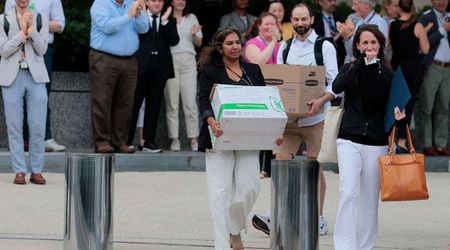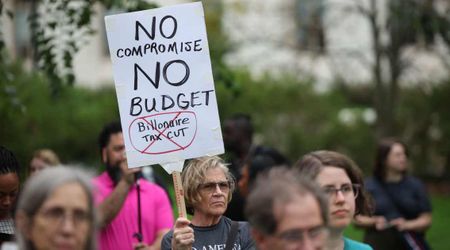Loan Forgiveness Under Biden’s SAVE Plan Starts In February Now; Check Eligibility and More

Biden’s student loan repayment plan to be implemented ahead of schedule
Benefits of President Joe Biden’s student loan repayment plan are set to kick in months ahead of schedule. President Biden announced that his administration is implementing the forgiveness portion of the Saving on a Valuable Education program, aka SAVE, nearly six months ahead of schedule, as per an official release. The debt cancellation now starts in February instead of July 2024. The Biden administration launched the Income-Driven Repayment plan in 2023.

The core requirements for student loan forgiveness through SAVE depend on the originally borrowed amount and how long borrowers have been in repayment.
Today, the Biden-Harris administration is announcing an accelerated timeline toward forgiveness for borrowers enrolled in the Saving on a Valuable Education (SAVE) Plan. https://t.co/I09qdVqg5H
— U.S. Department of Education (@usedgov) January 12, 2024
Learn what this means for you if you’re enrolled in SAVE (and if you’re not, learn… pic.twitter.com/7dZ4ENbMNv
Who qualifies for SAVE forgiveness?
Earlier, due to mixed messaging on the complex rollout qualifications, it was widely reported that only loan amounts of $12,000 or less would be eligible for early forgiveness. However, the White House and the Department of Education have now clarified that loan balances over $12,000 will also be eligible for forgiveness. As per the department’s official rules, borrowers who have made enough qualifying payments on their loans will be eligible for forgiveness even if their debt balance is more than $12,000.
Federal borrowers eligible for loan forgiveness under the SAVE plan will have their balances cleared in February, months ahead of schedule. https://t.co/m39lc4OeAj
— New York Magazine (@NYMag) January 12, 2024
Here are the other key qualifications:
1. Borrowers must be enrolled in the SAVE repayment plan.
2. Borrowers must have at least 10 years of qualifying payment history if they borrowed $12,000 or less of federal student loans for higher education. For every additional $1,000 above that amount, the qualifying payment history will go up by one year.
NOTE: The period of the pandemic-era payment pause will count on the 10-year timeline, whether or not borrowers were paying for the student debt.
Further, the department will also be contacting borrowers who are eligible for forgiveness but haven’t enrolled in SAVE yet. The White House asked people to look for an email titled: “You may qualify for loan forgiveness on SAVE," as per a CNBC report.
How does forgiveness under the SAVE plan work?
When the new SAVE plan was created by the Biden administration, it was proposed to student loan borrowers as “the most affordable repayment plan ever created,” as it offered more favorable terms to certain people. Under the forgiveness portion of the SAVE plan, the loan balances of borrowers will be forgiven after 10 years of repayments, instead of 20 years, if they had original loan balances of $12,000 or less. Further borrowers with slightly higher balances also win. As per the Education Department, as of early January 2024, about 6.9 million borrowers had enrolled in the new SAVE plan. The plan opened for enrolments in August in 2023.
I encourage all borrowers who may be eligible for early debt cancellation to sign up for the SAVE plan at https://t.co/so4PFkH2UC. Already, 6.9 million borrowers are enrolled in the plan, and 3.9 million have a $0 monthly payment.
— Joe Biden (@JoeBiden) January 16, 2024
However, some of the provisions of the new program weren’t expected to go into effect until July 2024. These provisions included a reduction of monthly payments for undergraduate borrowers and a shortened timeline to forgiveness for those with small balances. But the latter benefit has now been implemented by the Biden administration ahead of schedule and eligible borrowers can get the relief as soon as next month.
Who will benefit from the SAVE plan?
Borrowers who have enrolled for the new SAVE plan and who qualify for forgiveness will benefit sooner from the plan. Further, as per White House's official release, the SAVE plan particularly benefits the critical or low- and middle-income borrowers, community college students, and borrowers who work in public service. Those who have not signed up for the SAVE plan yet, it is recommended that they do so as soon as possible to expedite the process of forgiveness.






















